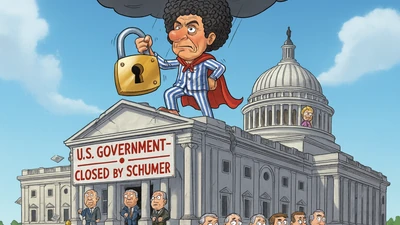The financial community is keenly awaiting the Bureau of Economic Analysis (BEA) release for September 2025, which will detail Personal Income and Outlays. Analysts' consensus forecasts paint a picture of continued consumer strength, but they also serve as a stark reminder that the long-term battle against elevated inflation—fueled by years of unrestrained fiscal policy—is still underway.
For those committed to economic stability and fiscal discipline, the consensus forecasts provide a basis for cautious optimism regarding the consumer, but serious concern about the persistence of price pressures.
The Analyst Consensus: What We Expect to See
The market is laser-focused on three key indicators within the report. The overall expectation is for moderate growth in income and spending, while inflation remains stubbornly above the Federal Reserve's target.
Metric | Analyst Consensus (MoM) | Analyst Consensus (YoY) | Key Implication |
Core PCE Price Index | Expected to show a modest increase (e.g., $+0.2\%$) | Expected to remain steady near 2.9% | The critical inflation measure. A steady Year-over-Year rate signals underlying price pressures are not receding quickly enough. |
Personal Spending (PCE) | Expected to show moderate growth (e.g., $+0.4\%$) | N/A | Demonstrates consumer resilience, but raises the risk of demand overheating if inflation does not cool. |
Personal Income | Expected to show moderate growth (e.g., $+0.3\%$) | N/A | Healthy income is necessary to sustain spending without drawing down savings, promoting long-term stability. |
The Reason for Cautious Optimism: The Resilient Consumer
The forecast for Personal Spending (PCE) growth is a positive sign that American families and workers remain economically resilient. In the face of interest rate hikes and ongoing price pressures, the consumer continues to drive the economy forward.
- Sustained Demand: A projected $+0.4\%$ increase in spending indicates that demand has not collapsed, which is a necessary condition for avoiding a downturn. This confidence in the market is an American strength we must foster with pro-growth policies.
- Income Stability: The expected increase in Personal Income suggests that the labor market, while potentially slowing its pace of growth, is still rewarding workers and giving them the necessary resources to meet their needs.
The Warning: Entrenched Inflation and Fiscal Policy
The caution stems directly from the Core PCE Price Index expectation. A consensus forecast that keeps the Year-over-Year rate near 2.9% is unacceptable and underscores a failure in long-term policy management.
- Far from Target: This inflation forecast is nearly a full percentage point above the Federal Reserve’s 2% target. It confirms that the inflationary wave, initially ignited by excessive federal spending, has become entrenched in core services and is not merely transitory.
- Erosion of Savings: If spending is up while core prices remain high, it implies that the real, inflation-adjusted gains for the average household are minimal. Our focus must be on policies that boost real income, not just nominal figures that are wiped out by the hidden tax of inflation.
The September expectations are a direct call to action. We cannot rely solely on the Federal Reserve’s tools to solve a problem that originated in Washington’s lack of fiscal discipline. The path to stable prosperity requires reigning in the spending that overstimulated the economy and introducing deregulation to unleash productivity and supply-side solutions.











